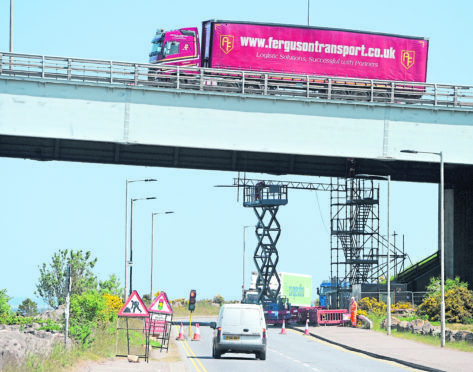The Kessock Bridge, linking Inverness with the Black Isle, is to undergo a major check-up on the steelwork under its carriageway.
The three-week investigation is to take place beneath the A9 from Stadium Road in Inverness, which could lead to traffic delays.
Engineers will be checking the integrity of the bridge from an elevated platform underneath the bridge deck.
Machinery will be stationed on Stadium Road underneath the Kessock Bridge at the southern end of the structure.
The inspection will also allow engineers to try out a protective painting system against corrosion on a small area of the steelwork.
The results of the investigations and the trial painting system will allow engineers to plan for any maintenance in the year ahead.
Bear Scotland promised to keep disruption to a minimum but, to keep road workers safe during the checks, the westbound lane of Stadium Road will be closed intermittently.
A temporary traffic light control system will be put in place.
Teams will attempt to use this temporary set-up only during off-peak times and when deliveries and critical scaffolding work is required.
Some operations will have to take place at the weekend during the three- week period, but the A9 will remain unaffected by these works.
Bear Scotland north-west representative Eddie Ross said: “These investigations give us a valuable insight into the current condition of the bridge’s steelwork below the deck and allow us to look ahead to future maintenance on the deck.
“We’ve taken steps to keep disruption to a minimum by working from Stadium Road and avoiding impacting the A9, with teams removing the traffic management during peak periods.”
He added: “Our teams will do all they can to complete the investigations as quickly and safely as possible.”
One of Scotland’s only cable-stayed bridges, the Kessock Bridge was opened in 1982 at a cost of more than £17 million to ease access north and south.
The Kessock Bridge carries approximately 30,000 vehicles a day, with 11% of these HGVs.
The last major work on the bridge was a £13.2m project in 2013 that brought it up to modern standards.
At the time of the construction it was thought to be one of the largest cable-stayed bridges in Europe.
